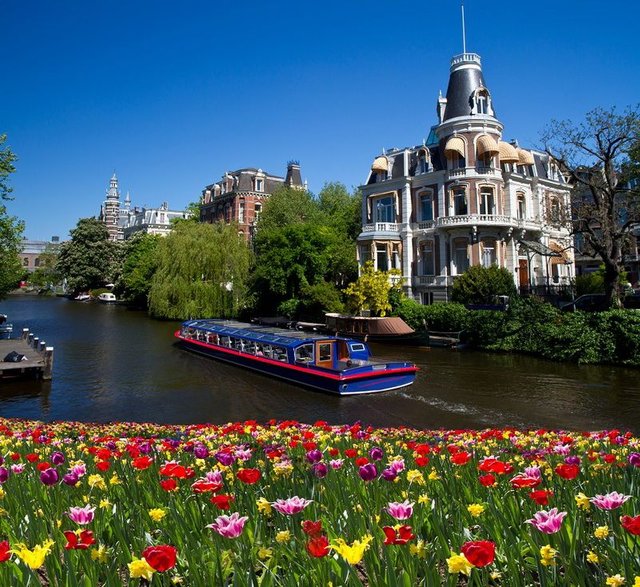Where to experience the Dutch Golden Age in Amsterdam
Amsterdam simply bulges with culture, cuisine, coffee shops and hot pink windows yet right now the city is glowing with the shine of the Dutch Golden Age.
Roughly spanning the 17th century (The Golden Age is officially dated from 1585 to 1672) this was a time when the Dutch ruled the waves and Amsterdam saw a glorious explosion of wealth and culture.

Flinck and Bol – The forgotten masters
Everyone has heard of Rembrandt but his pupils are hardly household names. This is changing with a long-awaited double exhibition “Ferdinand Bol and Govert Flinck: Rembrandt’s Master Pupils” showing at Rembrandt’s House and the Amsterdam Museum until February 18 2018.
Both born around 400 years ago, the pupils completed their training at Rembrandt’s House and became two of the most celebrated painters of the time. By late 1640 they had even surpassed Rembrandt in commercial output. Yet after their death they disappeared into the shadow of their master.
At Home with Rembrandt
Start at Rembrandt’s House where the master lived and worked for 19 years. Here you can see where the two pupils honed their skills as painters of portraits and historical scenes, working in the style of Rembrandt.
Amsterdam Museum
Once Flinck and Bol had completed their training, they branched out and tailored their styles to the changing taste of the time. The story continues in the Amsterdam Museum with elegant portraits and imposing historical scenes by the now established and successful duo. While Rembrandt painted his sitters exactly as he saw them, warts and all, the commercially smarter pupils produced flattering and more colourful portraits of their sophisticated and wealthy patrons.
Flinck had a network of friends and relatives in high places and Bol acquired a useful circle of clients when he married the well-connected Elisabeth Dell. The artists’ commissions for Amsterdam’s new Town Hall in Dam Square, now the Royal Palace, were the ultimate proof of their success. The works are still in situ and open to public viewing.
You can’t help but compare the lives of these rising stars to that of their master, Rembrandt. Although he was to produce creative and highly moving works of art right up until his death, he suffered personal tragedy and financial ruin. He had lost his first three children, then his wife, Saskia, while the later years were beset with bankruptcy and an acrimonious relationship with a former lover. As if that weren’t enough his common-law wife and only surviving son, Titus, predeceased him.

Museum Van Loon
Ferdinand Bol made so much money that he quit painting and became the first tenant of the grand residence at Keizersgracht 672, now the Museum Van Loon. On show are an impressive collection of his paintings, including Rembrandts and Rubens. Some of these are on show until early February in the mansion’s Coach House just beyond the delightful garden.
The Van Loon family, descendants of a co-founder of the Dutch East India Company, still reside here but visitors can stroll around the main rooms of the mansion to admire the fine furnishings and family portraits dating back to the Golden Age.
Along Golden Age Canals
Take a break from sightseeing with a cruise along Amsterdam’s canals. It’s touristy but fun, giving you a unique vantage point of the Golden Age and 18th century houses.
Boats float along the most exclusive stretches of the Unesco-protected canal ring, lined by lavish houses of wealthy merchants. Boats operate all day as well as evenings when you’ll see the picture postcard bridges lit up.
Where to Eat and Drink
Step back into the Golden Age at De Silveren Spiegel (The Silver Mirror). The two step-gabled, tilting houses were bought by a wealthy soap-boiler in 1614 and now make a romantic, candlelit setting for artfully presented Dutch cuisine. A la carte or tasting menus typically feature Volendam smoked eel, melt-in-the mouth scallops and tender Dutch beef. Crab comes in an edible frame. Dinner only.
One aspect of the remarkable legacy of maritime exploration and East Asian trade was Rijsttafel (‘Rice table’), the Dutch-Indonesian hybrid created in colonial times to give visiting VIPs a taste of ‘the spice islands’. Expect a veritable banquet of small spicy meat, fish or vegetable dishes with enough flavour to excite any palate. Kantjil & The Tiger on the lively Spuistraat serves a good-value Rijsttafel in the evenings.
Bruin Cafés
After a day absorbing the Golden Age glories spare an hour or two for one of the city’s bruin cafés (brown cafés), the cosy candlelit haunts named after the centuries-old smoke stains on the walls. From Rembrandt’s House you can cross over to the wonky little De Sluyswacht an ex-lock keeper’s house built in the late 17th century, and today a great spot for a glass of the local brew or a reviving shot of jenever (Dutch gin).
Golden Age hotels
Golden Age Canal House hotels retain their facades but inside they may well fast forward to the 21st century. The glamorous Pullitzer Hotel spreads over no less than 25 canal houses and combines tradition with modern Dutch design. Occupying a mere 10 houses the Ambassade Hotel scores highly for canal-side charm and a wonderful collection of modern art.
Hi! I am a robot. I just upvoted you! I found similar content that readers might be interested in:
https://www.thetravelmagazine.net/amsterdam-and-the-golden-age-notes.html
Hello and welcome to STEEMIT! Please follow and upvote me, as well as all your other friends you connect with here. Have a great day!
Its nice and good post i upvoted for you please upvote me thankyou
https://steemit.com/animals/@chnnu12/cute-little-cat-babys